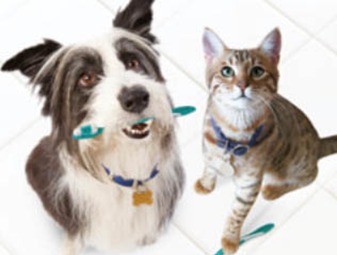DENTAL HYGIENE IS AN IMPORTANT PART OF YOUR PET'S HEALTH AND CAN OFTEN BE THE CAUSE OF SERIOUS ILLNESS.
Dental problems, if left untreated, can often lead to larger systemic problems in your pet due to oral bacteria entering the blood stream and damaging the kidneys, heart, and/or liver.
Pets have dental disease just like you do. Many of these problems can be avoided by bringing your pet to your veterinarian for regular dental check-ups and cleanings. Bad breath and/or reddened gums are usually signs of dental problems.
SOME SIGNS OF DENTAL PROBLEMS INCLUDE:
- Bad breath—one of the first signs of dental disease
- A yellowish-brown crust of plaque on the teeth near the gum line
- Red and swollen gums
- Pain or bleeding when your pet eats or when the mouth or gums are touched
- Decreased appetite or difficulty eating
- Loose or missing teeth
Veterinary dentistry is quite different from the equivalent process in people. For most of us, caring for our teeth and gums has been part of our daily routine for as long as we can remember. Consequently, a person's visit to the dentist is relatively brief and does not require sedation. In contrast, veterinary dentistry is considerably more involved, time-consuming, and complex. Cleaning a pet's teeth requires general anesthesia and, consequently, a day's hospitalization. The skills of several people, from veterinarians to veterinary technicians and animal attendants are required for each procedure.
After appropriate pre-anesthetic screening, our veterinary staff regularly performs cleanings, scaling, assessments of tooth and gum health, and extractions. Teeth cleanings are day long procedures, which allow your pet to go home the same day after fully recovering from anesthesia.


